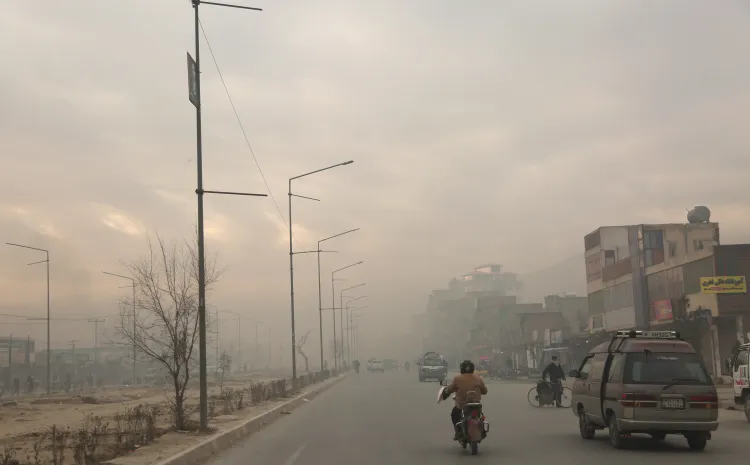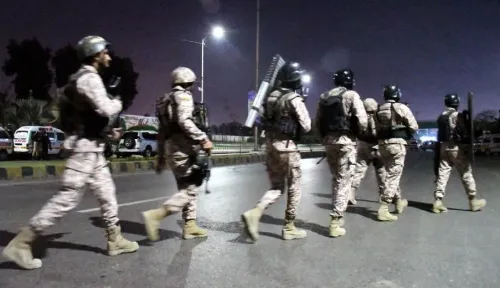Kabul: The Perils of Air Pollution for Residents Amid Winter

Kabul, Dec 18 (NationPress) As winter approaches, thick and hazardous smog from the combustion of coal, rubber, and other substandard fuels poses a grave threat to the health of millions of residents in Kabul, the capital city of Afghanistan.
Breathing the air during morning and evening hours presents significant risks, particularly since over 1 million households depend on inferior heating fuels.
The challenges of unemployment and poverty have compelled numerous citizens to use smoky and unrefined fuels for home heating during the cold season. Desperate families often resort to burning harmful materials like plastic collected from refuse.
One taxi driver, Mujeeb Rahman, shared his experiences while purchasing coal in the Deh Sabz district on the outskirts of Kabul. He recognized the dangerous impacts of coal but noted that financial struggles leave families with limited options.
"Coal has numerous drawbacks and is also dangerous," Rahman remarked.
"People cannot afford wood for heating, so they settle for coal. The smoke it produces causes significant health issues."
The concerned driver expressed alarm over the escalating health crisis.
"The burning of low-quality fuels leads to diseases such as pneumonia and shortness of breath. If this matter is not urgently addressed, it will escalate into a catastrophe," he warned.
Health officials share these worries, reporting an increase in illnesses linked to air pollution, including respiratory issues, heart and lung diseases, as well as colds and coughs.
"Every day, numerous children under five and individuals with compromised immune systems are hospitalized due to ailments triggered by poor air quality," stated Hamayoun, a specialist physician at a state-run hospital in Kabul.
He elaborated that seasonal illnesses are frequently caused by decreased oxygen levels in the blood, resulting from burning coal and other fuels that emit carbon monoxide, as reported by the Xinhua news agency.
Officials from the Afghanistan National Environmental Protection Agency (NEPA) indicated a slight improvement in Kabul's air quality compared to previous years. "Data indicates a 10 to 20 percent reduction in pollution levels in Kabul compared to earlier years," said Toofan Jebran, director of regulation and pollution control at NEPA.
Nonetheless, Jebran acknowledged that significant challenges persist. He identified inadequate electricity and refined fuels as the primary contributors to the rising air pollution in Kabul, a city with approximately 6 million residents.
When asked about potential solutions, Jebran suggested, "The provision of 24-hour electricity and widespread access to gas delivered through pipelines must be prioritized. If citizens can rely on clean energy, their dependence on harmful fuels will lessen."
The absence of clean energy sources, limited electricity access, rapid population growth, an increasing number of vehicles, and the burning of highly polluting fuels such as coal, plastics, and toxic materials in factories have raised alarms about the well-being of Kabul's residents.
"Pollution has significantly escalated. The extreme levels of dust and smoke in Kabul city at night hinder clear visibility while driving," remarked Haji Delagha, a coal seller, to Xinhua.
Despite years of considerable financial investments aimed at addressing environmental challenges, Kabul continues to rank among the world's most polluted cities. The dire air quality presents a serious threat to public health and necessitates immediate action.









